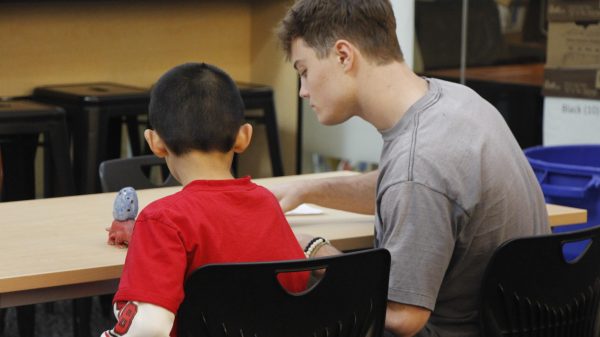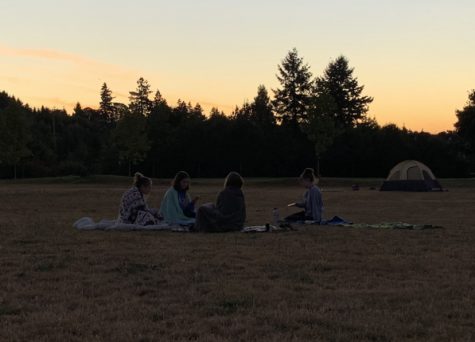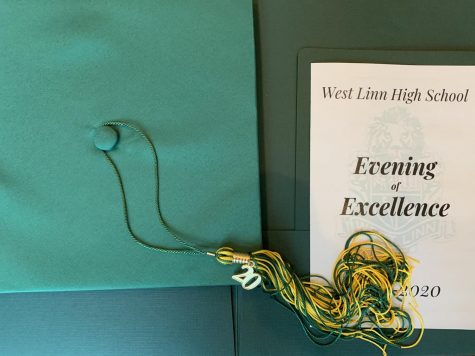From animator’s eyes
Award-winning filmmaker creates characters from clay
Brice Brown
Always sporting a paint-stained blue coat and headphones around the neck, senior Brice Brown exudes an offbeat sense of creativity. Here’s Brown’s party trick: Pick any Crayola crayon, and the color connoisseur can identify its name.
Brown’s greatest talent is creating exceptional stop-motion films. Last June, Brown won $4,000 and first place on an international stage with his stop-motion comedy “Thomas and the Extraordinary Bathroom Incident.”
Brown has submitted another film to this year’s competition: the sci-fi adventure “Geladuch.”
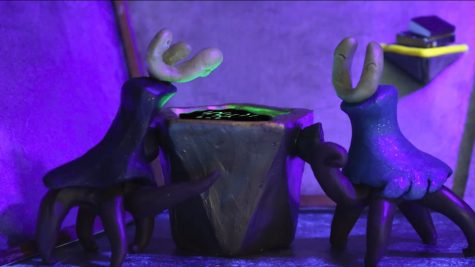
Bringing aliens to life
“It’s sort of like ‘Alien’ but reversed,” Brown said, “Where instead of an alien invading a human ship, it’s an alien ship being invaded by a human.”
After finishing a slapstick last year, Brown decided to tackle science fiction next. Clay animation has great potential for creature building, Brown thought.
Brown created agender, jellyfish-like aliens to star in “Geladuch,” a portmanteau of the Latin word for jelly and the Czech word for ghost.
The aliens were originally creepier, Brown admits, but cuter ones appealed to Brown as the film’s main characters, hand sculpted from Van Aken plastalina, a high-quality modeling clay.
For the aesthetic of the film, Brown paid attention to the details. Brown wanted black lights and metallic textures. Brown distinguished the human pod from the alien ships with circles and squares in one and pentagons and triangles in the other.
Brown drew inspiration for certain shots from rock album covers like U2’s “No Line on the Horizon” and The Who’s “Quadrophenia.”
“Geladuch” wasn’t solely Brown’s work; 2D animation and futuristic sets were done by senior Grey Ross and junior Nicholas Bergerson respectively.
It took Bergerson three days’ worth of work to design, construct and paint the sets.
“[Brown] does give a lot leeway for the designer to kind of put their personal touch to the set or to whatever they’re designing,” Bergerson said, “Which is nice.”
One of Bergerson’s favorite set pieces is the hallway, which needs to allow the camera to get in. It was also designed to allow Brown to change its length, make it look endless.
“It was like making a puzzle that [Brown] could take apart,” Bergerson said.
In the film, an astronaut watches aliens play a harmless video game but misinterprets it as an attack on Earth.
The game’s controller plays a large role in the story. It’s a comment on nostalgia and materialism, according to Brown.
“We’ve all lost something from our past,” Brown said. “Sometimes we only have a few things to keep from it.”
Brown submitted the film to the International Youth Silent Film festival, a competition for creators under 20 years old. The three-minute movies are due every April, and the filmmakers are invited to a screening at the historic Hollywood Theatre in Portland in May, complete with live organ music.
“Geladuch” was screened May 10 at the Pacific Northwest Regional. Brown attended the event with family members and friend Ian Underwood, senior.
The festival’s founder, Jon “JP” Palanuk, announced the regional winners starting with third place: a stop-motion film called “The Western Heist.” Then, for second place, Brown noticed Palanuk squinting his eyes.
“I could tell, oh, he’s going to read ‘Geladuch,’” Brown said, “Because it’s hard to read.”
Brown was right; “Geladuch” won second place.
“Once he announced it,” Brown said, “I was like ‘Yes!’ because I was really happy to get that type of award.”
Brown walked over to the mic to accept the award. Brown hadn’t written a speech beforehand, but delivered thoughtful thanks to family for being life and friends for being inspiration.
For the hard work, Brown took home a wooden plaque and $500, which was shared with the rest of the film’s crew.
The international awards ceremony takes place Thursday at the Hollywood Theatre, where Brown could win a bigger prize.
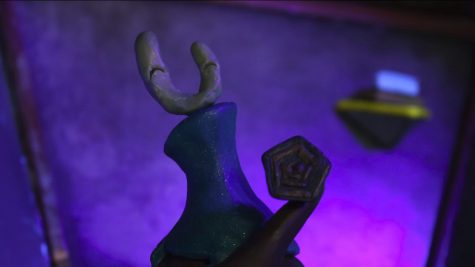
The seven-year journey
Brown hadn’t always competed with stop-motion films. Previously, Brown had made several live-action shorts, through film classes at Rosemont Ridge Middle School and at West Linn High School, which were submitted to the festival.
It wasn’t until 2016’s competition that Brown was inspired. Three students shared their stop-motion film, which made Brown think, “Hey I can easily do that, and I can easily become a finalist.”
Then Brown began to work on a passion project merely dreamt of since 13.
Brown’s interest in stop motion began a little earlier at 10 years old, when Brown attended an OMSI summer camp. Soon after, Brown created the film’ lead character: Thomas, a big-eyed, blue face with legs.
Over the summer of 2016, Brown drew up storyboards. Up until Christmas, Brown crafted characters, props and set pieces. With his Canon Rebel T6i nicknamed “Rita,” a Christmas gift from his parents, Brown animated until May of 2017, bringing the vision to life.
The plot struck Brown at the Walmart Neighborhood Market, off Route 43. Brown entered the store’s bathroom and observed a metal lining that ran across the floor and the ceiling.
“I thought, ‘Hey, what if that’s a portal?’” Brown said, “‘And they didn’t have room for a bathroom?’”
Thus, a wild story was born.
The three-minute film, “Thomas and the Extraordinary Bathroom Incident,” follows Thomas’ visit to a local grocery store and the chaos that ensues when he discovers that the building’s bathroom is in another dimension.
Brown submitted it to the 2017 film festival, and the judges selected Brown as a finalist in the regional competition. Brown was invited to the screening at the Hollywood Theatre on May 22 and 24.
For Brown, it didn’t matter if the film won. If not, Brown would try again in 2018.
“I wanted to make a film that was fun to watch,” Brown said.
Ultimately, Brown’s film did win at the regional, taking first place and $1,000.
Then, on June 8, Brown took his film to the International Award Show. The film succeeded once again and won another $3,000.
“When they announced my name,” Brown said, “I was like ‘What? What?’”
Afterward, the film festival winners had the opportunity to ride around Portland as part of the Rose Festival Grand Floral Parade.
Brown spent some of the prize money on art supplies, animation supplies, camera rigs and snacks. The majority, however, was saved for college and other things.
Soon after, Brown was busy animating again, as “Geladuch” came into production.
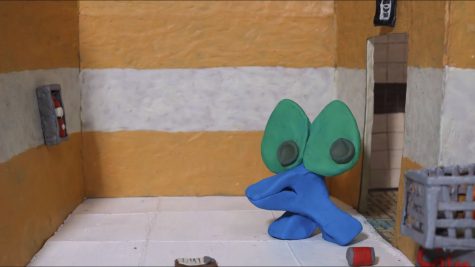
The allure of clay animation
“One of the great things about Brice is that he’s innately curious,” Ann Breyne, photography teacher, said.
Exploring courses like Breyne’s AP Photography benefits filmmakers like Brown, according to Breyne, They better understand elements like composition and lighting.
Stop-motion animation is not easy to master. Thousands of photos are taken while repeatedly moving sculptures by small increments to create the illusion of movement. There is a lot of room for error.
“If you think about it,” Wind Lothamer, animation teacher, said, “It’s slow, glacial speed.”
For instance, the average animator for the Portland-based production company Laika only completes 4 seconds of footage after one week of work.
One challenge of stop-motion filmmaking is seeing the larger picture, Lothamer said. While some young filmmakers become fixated on the details, Brown has an aptitude for comprehending the story on both small and large scale.
With its challenges and opportunities, Brown believes stop motion is “the purest form of filmmaking.” In live action, filmmakers are limited by weather, locations and actors’ ability, Brown said. Stop motion differs.
“Every single frame is under your control,” Brown said. “Not under an actor’s control, not under a computer’s limitations, not under your drawing ability. Everything you can do, in stop motion, is possible.”
Brown has animated everything: aliens, magicians, alternate universes and more. One film features a character not made of sculpting clay but of Tootsie Roll candy.
“[Brown] will take the most mundane thing and make it really bizarre,” Ann Breyne, photography teacher, said.
The art won’t stop soon. Although Brown doesn’t intend to participate in the silent film festival next year, Brown has been accepted to the California Institute of the Arts, where the animating will continue.
After college, Brown isn’t sure where he’ll be. Regardless, the filmmaker will continue learning and progressing. Brown wants to continue telling stories visually, test the medium, push the industry to produce more diverse films.
“What matters to me is making things. And whatever path allows me to make more things, that’s my path.”
Your donation will support the student journalists of West Linn High School. Your contribution will allow us to continue to produce quality content by purchasing equipment, software, and continuing to host our website on School Newspapers Online (SNO).

Amateur magician and wannabe improv comedian Philip Chan has been writing for The Amplifier since his freshman year. Now co-editor in chief, Chan firmly...
























![Game, set, and match. Corbin Atchley, sophomore, high fives Sanam Sidhu, freshman, after a rally with other club members. “I just joined [the club],” Sidhu said. “[I heard about it] on Instagram, they always post about it, I’ve been wanting to come. My parents used to play [net sports] too and they taught us, and then I learned from my brother.”](https://wlhsnow.com/wp-content/uploads/2024/03/MG_7715-2-1200x800.jpg)
![At the bottom of the third inning, the Lions are still scoreless. Rowe stands at home plate, preparing to bat, while Vandenbrink stands off to the side as the next batter up. Despite having the bases loaded, the team was unable to score any runs. “It’s just the beginning of the season. We’re just going to be playing out best by June, [and] that’s where champions are,” Rowe said.](https://wlhsnow.com/wp-content/uploads/2024/03/IMG_3077-1200x900.jpg)






![The teams prepare to start another play with just a few minutes left in the first half. The Lions were in the lead at halftime with a score of 27-0. At half time, the team went back to the locker rooms. “[We ate] orange slices,” Malos said. “[Then] our team came out and got the win.”](https://wlhsnow.com/wp-content/uploads/2023/10/IMG_2385-1200x800.jpg)









































































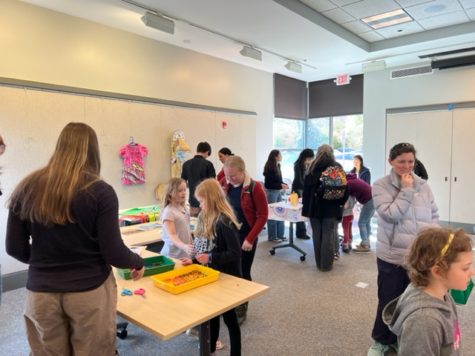



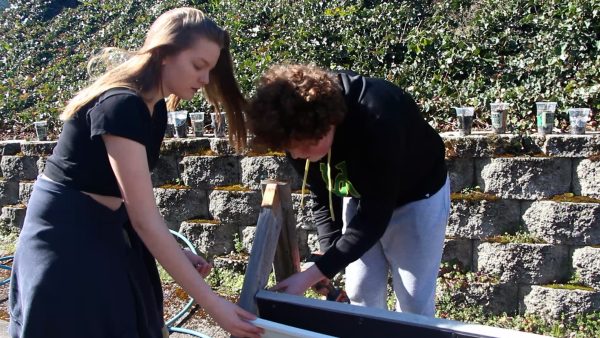
![Game, set, and match. Corbin Atchley, sophomore, high fives Sanam Sidhu, freshman, after a rally with other club members. “I just joined [the club],” Sidhu said. “[I heard about it] on Instagram, they always post about it, I’ve been wanting to come. My parents used to play [net sports] too and they taught us, and then I learned from my brother.”](https://wlhsnow.com/wp-content/uploads/2024/03/MG_7715-2-600x400.jpg)

